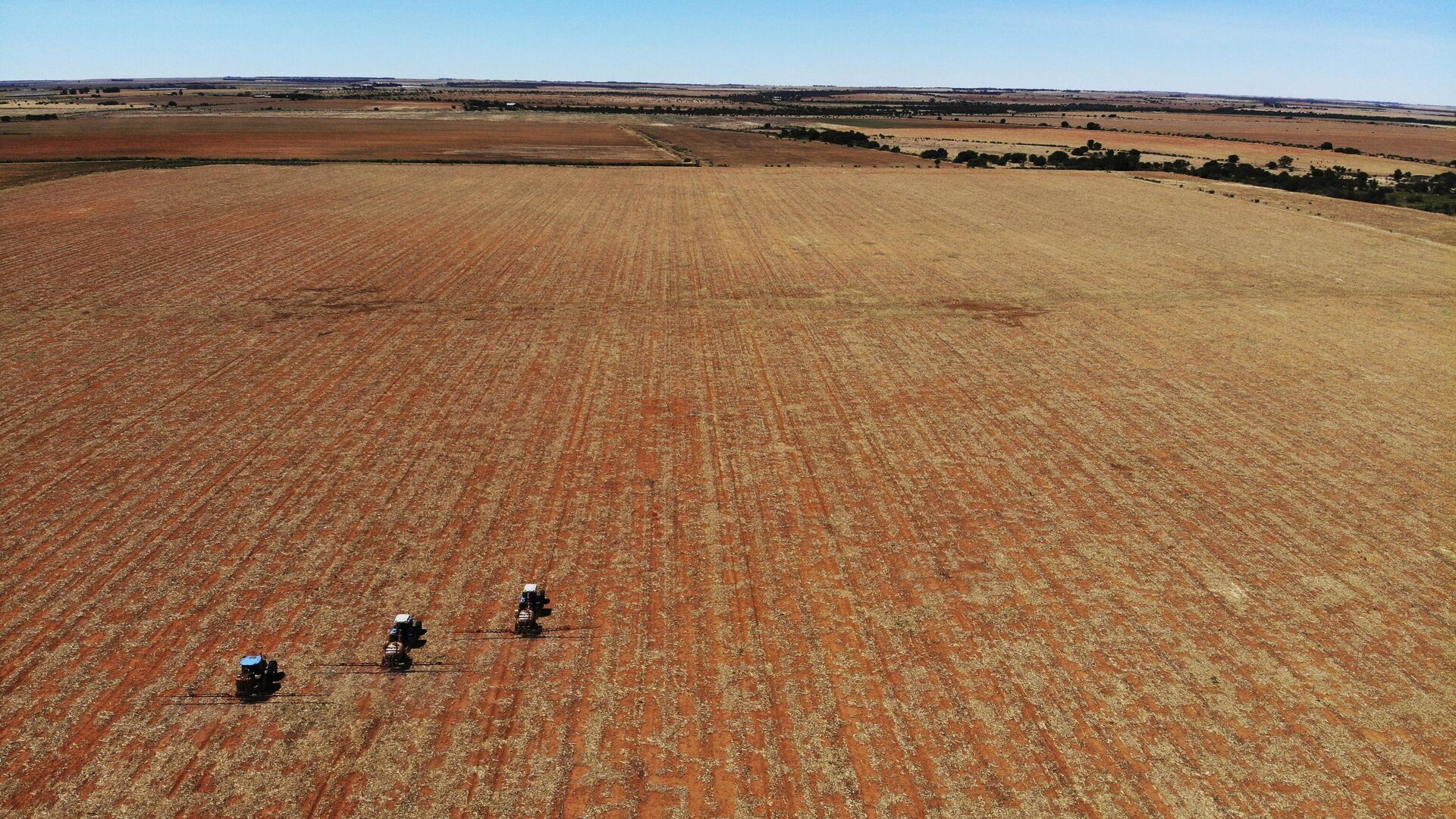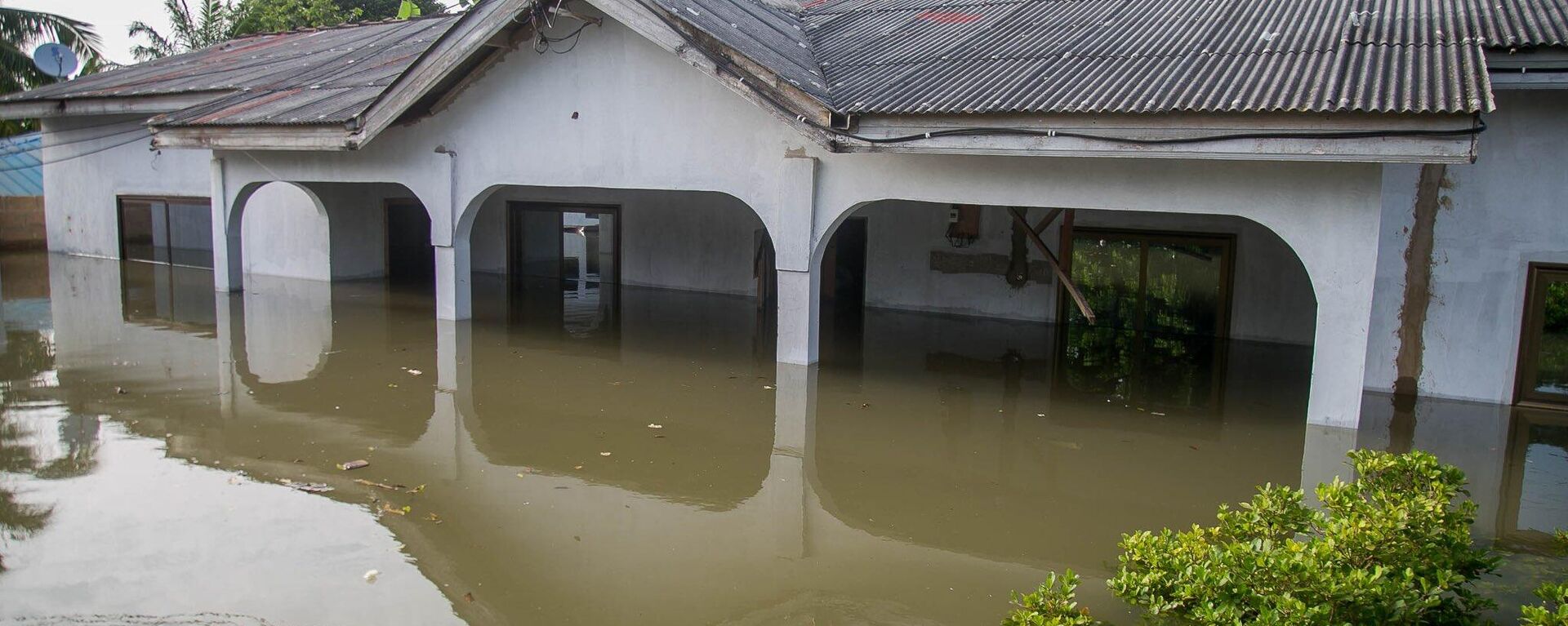https://en.sputniknews.africa/20231013/disasters-caused-38-trillion-in-damage-to-crops-and-livestock-over-last-30-years-fao-1062772645.html
Disasters Caused $3.8 Trillion in Damage to Crops and Livestock Over Last 30 Years: FAO
Disasters Caused $3.8 Trillion in Damage to Crops and Livestock Over Last 30 Years: FAO
Sputnik Africa
In the first-ever global assessment of the impact of disasters on agriculture, the UN agency indicated that the number of disaster events worldwide has... 13.10.2023, Sputnik Africa
2023-10-13T18:39+0200
2023-10-13T18:39+0200
2023-10-13T18:39+0200
natural disaster
world food crisis
food security
world food programme (wfp)
food and agriculture organization (fao)
security
emergency
sub-saharan africa
https://cdn1.img.sputniknews.africa/img/07e7/0a/0d/1062772473_0:160:3072:1888_1920x0_80_0_0_3d219777ff05b6d56a2eefeb20419aaa.jpg
Over the past three decades, disaster events have resulted in the loss of an estimated $3.8 trillion worth of crops and livestock production, corresponding to an annual loss of $123 billion or 5% of the global agricultural gross domestic product (GDP), the United Nations' Food and Agriculture Organization (FAO) said in a new report. The report stressed that the figure may be higher if there were systematic records on the losses in the fisheries, aquaculture, and forestry subsectors, emphasizing the urgent need to enhance data and information on the consequences of catastrophes on all subsectors of agriculture.The organization revealed that in the last 30 years, natural disasters have caused the greatest relative losses in lower and lower-middle income nations, resulting in up to 15% of their overall agricultural GDP. In comparison with other regions, Asia incurred the biggest share of the overall economic losses.However, the research elaborated that losses in Asia accounted for only 4% of the agricultural added value, whereas in Africa they amounted to almost 8%.It was also indicated that losses in major agricultural products have been on the rise. Specifically, the average annual loss for cereals has been 69 million tonnes over the last three decades, while fruits, vegetables, and sugar crops have each experienced average losses approaching 40 million tonnes per year.Additionally, meat, dairy, and egg products demonstrated an estimated average loss of 16 million tonnes per year. The report emphasized the increasing frequency of natural disasters, adding that when these hazards occur, they can cause cascading effects across various systems and sectors.According to the report, drivers of disaster risk include climate change, poverty, inequality, population growth, health emergencies from pandemics, unsustainable land use practices, armed conflicts, and environmental degradation. In severe situations, natural calamities lead to rural populations being uprooted and relocated to other areas.The research identified key action priorities, including improving the collection and accessibility of data and information on the impact of disasters on agriculture, implementing widespread and multi-hazard disaster risk mitigation strategies in policymaking, and increasing investments in resilience.
https://en.sputniknews.africa/20231013/over-500-ghanaian-households-flooded-after-major-dams-spillage-1062766061.html
Sputnik Africa
feedback@sputniknews.com
+74956456601
MIA „Rossiya Segodnya“
2023
News
en_EN
Sputnik Africa
feedback@sputniknews.com
+74956456601
MIA „Rossiya Segodnya“
Sputnik Africa
feedback@sputniknews.com
+74956456601
MIA „Rossiya Segodnya“
natural disaster, world food crisis, food security , world food programme (wfp), food and agriculture organization (fao), security, emergency
natural disaster, world food crisis, food security , world food programme (wfp), food and agriculture organization (fao), security, emergency
Disasters Caused $3.8 Trillion in Damage to Crops and Livestock Over Last 30 Years: FAO
In the first-ever global assessment of the impact of disasters on agriculture, the UN agency indicated that the number of disaster events worldwide has increased from 100 per year in the 1970s to about 400 in the last two decades. Climate change has exacerbated the situation, magnifying social and ecological vulnerabilities that already existed.
Over the past three decades, disaster events have resulted in the loss of an estimated $3.8 trillion worth of crops and livestock production, corresponding to an annual loss of $123 billion or 5% of the global agricultural gross domestic product (GDP), the United Nations' Food and Agriculture Organization (FAO) said in a new report.
The report stressed that the figure may be higher if there were systematic records on the losses in the fisheries, aquaculture, and forestry subsectors, emphasizing the urgent need to enhance data and information on the consequences of
catastrophes on all subsectors of agriculture.
"Agriculture is one of the most highly exposed and vulnerable sectors in the context of disaster risk, given its profound dependence on natural resources and climate conditions. Recurrent disasters have the potential to erode gains in food security and undermine the sustainability of agrifood systems," said FAO Director-General Qu Dongyu.
The organization revealed that in the last 30 years, natural disasters have
caused the greatest relative losses in lower and lower-middle income nations, resulting in up to 15% of their overall agricultural GDP. In comparison with other regions, Asia incurred the biggest share of the overall economic losses.
However, the research elaborated that losses in Asia accounted for only 4% of the agricultural added value, whereas in Africa they amounted to almost 8%.
It was also indicated that losses in major agricultural products have been on the rise. Specifically, the average annual loss for cereals has been 69 million tonnes over the last three decades, while fruits, vegetables, and sugar crops have each experienced average
losses approaching 40 million tonnes per year.
Additionally, meat, dairy, and egg products demonstrated an estimated average loss of 16 million tonnes per year.
The report emphasized the increasing frequency of natural disasters, adding that when these hazards occur, they can cause cascading effects across various systems and sectors.
According to the report, drivers of disaster risk include climate change, poverty, inequality, population growth, health emergencies from
pandemics, unsustainable land use practices, armed conflicts, and environmental degradation. In severe situations, natural calamities lead to rural populations being uprooted and relocated to other areas.
The research identified key action priorities, including improving the collection and accessibility of data and information on the impact of disasters on agriculture, implementing widespread and multi-hazard disaster risk mitigation strategies in policymaking, and increasing investments in resilience.


